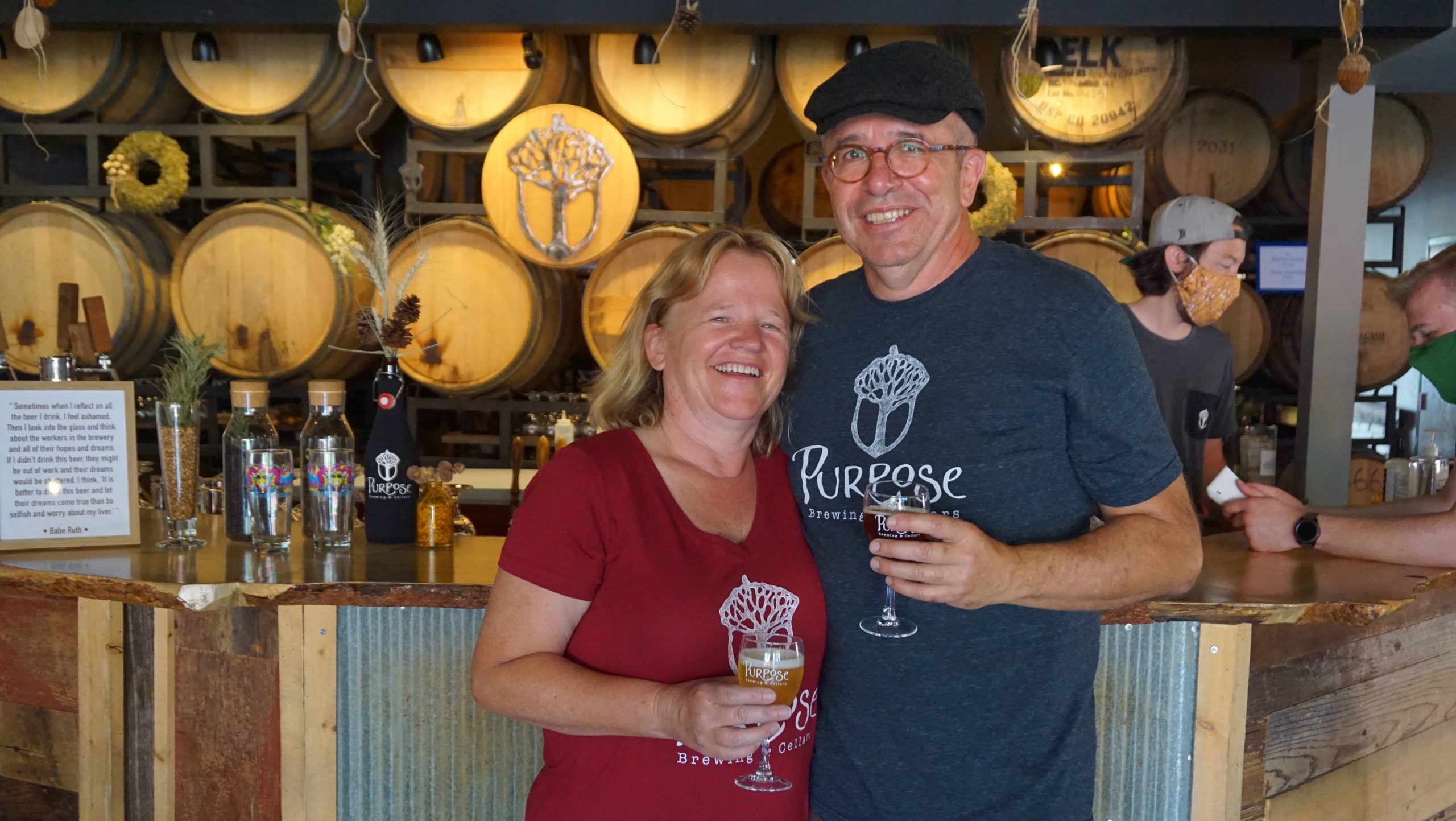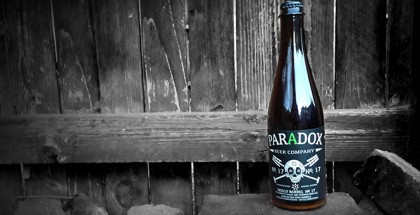What’s a Kettle Sour All About?
What’s the difference between a Kettle Sour and a traditional sour? Is there even a difference? It’s a question that I hear frequently as breweries continually explore new beer styles. The answer is that yes, there are critical differences in the flavors of the beers and in how they’re made.
The short version – especially if you’re trying to pick a beer to accompany this article–is that Kettle Sours are relatively light, simple and tart. Traditional sours are often darker, heavier and usually more complex with intense levels of sour.
Now that you’ve hopefully got a sour beer of some type in hand, let’s kick back and get into some of the more technical and scientific details of how it was made.
Simple and Tart

Breweries create Kettle Sours by intentionally adding the bacteria lactobacillus during the brewing process. Lactobacillus can only produce lactic acid and that becomes the primary sour flavor component of the brew. As a result, kettle sours tend to be simply tart and acidic without much more depth or complexity.
Brewers often toss in fruit or other adjuncts to add more levels of flavor, but the single-note lactic acidity usually remains at the forefront. Styles that typically use the kettle souring process include Berlinerweisse and Gose.
Kettle Souring 101
Brewers start a Kettle Sour much like any other beer by boiling the wort to ensure it’s stable and clear of any unintended bacteria. However, after just a quick boil, they cool the wort and intentionally add lactobacillus to the steel brew kettle. Hence the name Kettle Sour.
After the bacteria does its work for a few days and the wort reaches the desired sourness, the brewer continues with the boil. This includes adding hops, yeast and any other ingredients, after which the brewer sends the beer off to fermentation.
Why Kettle Sour?
For brewers, there are definite advantages to kettle souring.
“Kettle Sours are very easy to do, very easy to convert sugar from a brewing standpoint in a day,” said Paul Mahoney, head brewer at Launch Pad Brewing in Aurora, CO. Because the souring only takes a day or so, the beer is ready to serve in about the same time as regular, unsoured beer.

Additionally, because the souring occurs before the primary boil there is no risk of contaminating the brewing facility with microorganisms that could cause unintended spoilage in other beers. Restarting the boil kills off the lactobacillus and also ensures that they will not continue souring the beer to the point of un-drinkability.
The Limits of the Kettle
The primary disadvantage is the single-note nature of the flavor created by kettle souring and the tendency of that flavor to stand out. As a result, kettle souring can realistically only produce a limited range of styles and complexity.
Peter Bouckaert, who brought barrel aging to New Belgium almost 25 years ago and currently owns Purpose Brewing in Ft. Collins, CO has a different take on the disadvantages of kettle souring. “Personally I’m not a fan of the Kettle Sours because they tend to have a tomato soup aroma,” he said.

Traditional Methods Create Complexity
In contrast, traditionally-soured beers cover an incredibly wide range of flavors and diverse beer styles. There’s really no way to describe a “typical” flavor profile. They can have notes of fruit, wood, funk and widely different levels and types of sourness including high pucker factors. The flavors usually layer over each other to produce a beer with a complex interplay of taste.
Well-known styles include Lambic and Oud Bruin beers.
Bring on the Barrel
The great variety in traditional sours comes from several factors. For starters, brewers have been making sour beer for hundreds of years and thus have developed many different styles and souring processes.

The most common souring method is barrel-aging. Barrel-aging takes advantage of the organic nature of the wooden barrels. Porous barrels become impregnated with a variety of bacteria that go back to work every time a new beer fills the barrel. “If you work with barrels, you get a more complex acid profile plus you get a whole range of fruity tones that are produced by esters,” Bouckaert said.
Breweries are very protective of their barrels as they contain a mix of organisms unique to that brewery. This produces beers with a consistent flavor that cannot be matched by another brewery.
Beyond the Barrel
Many brewers also add fresh fruit to introduce bacteria from the skin. Others leave the wort open to the air to pick up microorganisms that happen to blow by in a process called spontaneous fermentation.
Another complexity-generator is the diversity—both planned and unplanned—of the microorganisms involved in making traditional sours. These can include wild yeasts, different kinds of bacteria and even fungus.
The long fermentation and aging period of traditional sours gives these microorganisms the opportunity to interact with each other. They ultimately create ecosystems that produce interesting results. “It gives them time to evolve and you get these really nice nuances that you don’t really get out of a Kettle Sour,” Mahoney said.
Microorganisms Mean Flavor
Overall, this means that each batch and each barrel has a unique flavor profile. The multitude of microorganisms spins off diverse sour flavors along with an almost limitless variety of additional notes. “In my eyes, it’s a more complex beer,” added Bouckaert.

While the creativity allowed by traditional souring offers great upside potential, it also introduces new risks. The most obvious risk is the relatively uncontrolled souring process, where things can go bad and produce spoiled, undrinkable beer.
“You can have something age for two years and it’s really horrible,” Mahoney said. “You don’t know until you get to that stage.”
Another disadvantage is the time it takes for the microorganisms to do their sour job. Beers sit in barrels for months or years, adding time and cost to tapping the finished brew.
Kettle Sours Open New Markets for Breweries
Both Bouckaert and Mahoney agree that Kettle Sours have a place in craft beer, often as a way to introduce beer drinkers to sours or non-beer-drinkers to beer.
“Kettle sours are a little bit easier to get the mass consumers into, or even new sour drinkers because most of them are heavily fruited,” Mahoney said. He added that it’s often a comfort zone for wine or cocktail drinkers because they are accustomed to acidity and fruit flavors.
Reflecting on his time at New Belgium, Bouckaert noted, “With Kettle Sours, people are starting to associate sour with beer. That’s what we missed when we first started [barrel-aged] La Folie – people had difficulty grasping the complexity.”
He added: “The good thing is that Kettle Sour really has helped introduce the sour as a good thing in this country.”
Right Beer, Right Now
Clearly, there’s no “right” choice when picking a sour beer. The two different methods produce radically different results so the correct choice is whatever you’re in the mood for at the moment. Understanding the process and results at least insures that you can pick the right beer for right now.
Featured image (Launch Pad Brewing’s How to Deal With The In-Laws Imperial Cranberry Sangria Kettle Sour) courtesy of Scott Grossman







Submit a Comment